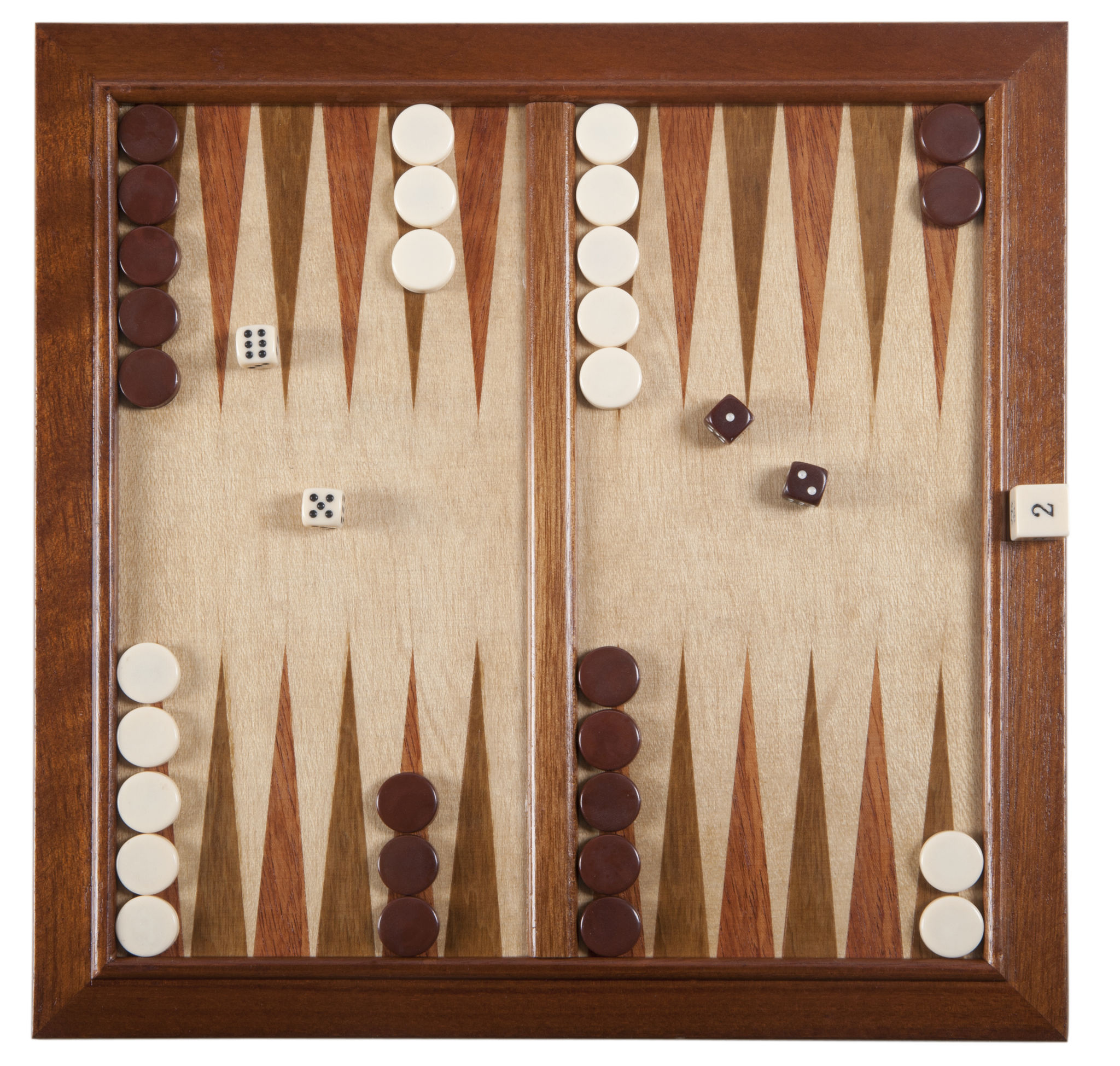Beginner's Guide to Mastering Backgammon
Understanding the Basics of Backgammon
Backgammon is one of the oldest known board games, combining elements of strategy and luck. At its core, the game is played between two players, each with 15 checkers. The goal is to move all your checkers into your home board and then bear them off. The first player to bear off all their checkers wins the game.
The game is played on a board with 24 narrow triangles called points. These points alternate in color and are grouped into four quadrants of six points each. Each player has a home board and an outer board separated by a bar, and the setup of checkers is mirrored for both players.

Setting Up the Board
To begin, each player places their checkers on the board in a specific starting position. The standard setup includes two checkers on your 24-point, five on your 13-point, three on your 8-point, and five on your 6-point. Once the board is set up, players take turns rolling two six-sided dice to determine their moves.
The numbers rolled on the dice dictate how far you can move your checkers. You can move two different checkers or one checker twice, but remember that you cannot land on a point occupied by two or more of your opponent's checkers.
Basic Strategies and Tactics
While luck plays a role in backgammon, strategic play is essential for mastering the game. One basic strategy is to make a "prime," which is a series of consecutive occupied points that block your opponent from advancing their checkers. Another tactic is to hit your opponent's blot (a single checker), sending it to the bar where it must re-enter the board.

Learning to balance offense with defense will greatly improve your game. While it's tempting to advance your checkers quickly, leaving too many blots can be risky. Consider when to play aggressively and when to focus on building a strong defensive position.
The Doubling Cube
The doubling cube adds an exciting layer of strategy to backgammon. It is used to increase the stakes of the game. At any point during the game, a player can offer a double before they roll the dice. The opponent can accept or decline; if they accept, the game's value doubles, but if they decline, they forfeit the game.

Using the doubling cube wisely involves assessing your position and deciding whether it's advantageous to increase pressure on your opponent. Remember, the cube only changes hands when accepted by the opponent, adding a psychological element to your gameplay.
Practice Makes Perfect
A crucial part of mastering backgammon is practice. Playing against opponents of varying skill levels will expose you to different strategies and styles. Online platforms offer the opportunity to play against people worldwide, honing your skills and understanding of the game.
As you gain experience, you'll develop an intuitive sense of probability and risk management, both key components in becoming a backgammon expert. Patience and analysis of each move will gradually refine your approach.
Final Tips for Beginners
Finally, here are a few tips to keep in mind as you embark on your journey to mastering backgammon:
- Stay focused: Concentration is crucial for anticipating your opponent's moves and planning your strategy.
- Learn from losses: Analyze games you lose to understand where you can improve.
- Be adaptable: Flexibility in strategy is vital as each game develops differently.
With dedication and practice, you'll find yourself not only enjoying backgammon more but also mastering it over time. Keep playing, learning, and most importantly, have fun!
